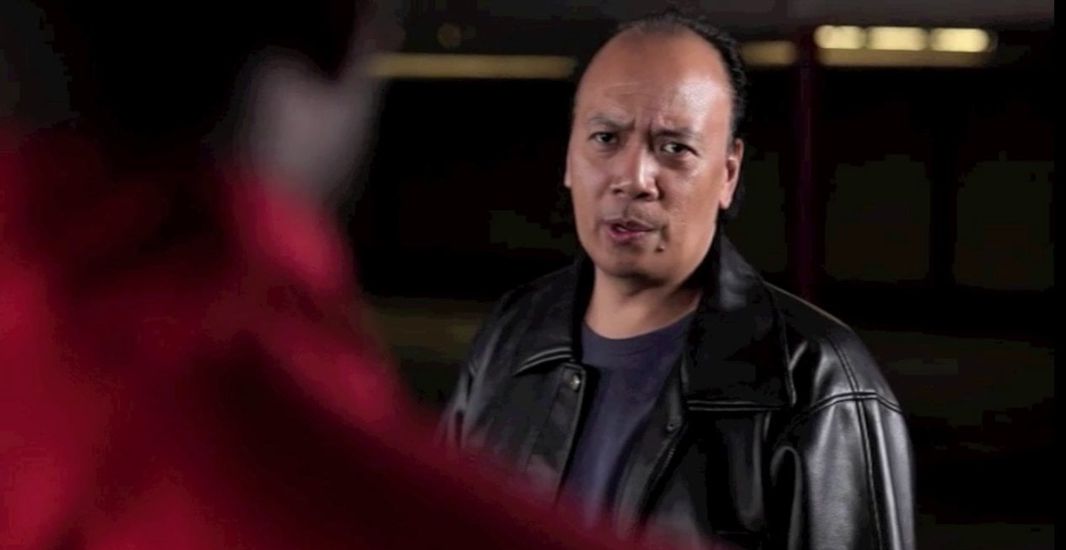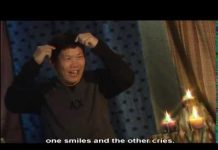Now settle deeply for our next visit with the Master…
Tom: In general, which Asian sci fi films (or sci fi influenced) are we (Western audiences) missing out on?
John Kreng: Probably the most controversial is BATTLE ROYALE, (at the time of it’s release) one of the highest grossing films in Japan. This is not your safe generic fantasy sci-fi meant to please the masses with lasers, aliens, and spaceships. Rather it is a very sobering, dark, and cynical view of the near future when the Japanese economy has collapsed with double-digit unemployment.
As a result, the Japanese social structure breaks down and to keep order with the rebellious and disillusioned youth, the government creates the Battle Royale act – a random lottery – where a select group of teens are annually sent to an island where only one will survive. It’s essentially LORD OF THE FLIES meets the reality TV show SURVIVOR.
If this film was to be released here in the U.S., I am sure it would create a lot of controversy about how the teen violence is depicted on screen in a post Columbine era. The violence in the film is very graphic and could easily receive a hard R or possibly an NC-17 rating. Many feel the film is more of an exploitation rather than an examination of teen violence. I feel it is both.
The exploitation is pretty much a given. The examination of the violence is in the subtext where the audience has to feel the actors emotions and reactions as the students are “forced” to take deadly action on their friends or die. By doing this, the film asks the audience to feel and experience along with the unwilling participants, which can be very uncomfortable for many audience members who may not want to go to that place for “entertainment.”
Rumor has it that it has not hit our shores because of the extreme violence in the film in a post Columbine era. However, the real reason why it has not had an official release here is because of the hefty asking price Toei Pictures (the Japanese studio who owns the film) is asking for from US distributors. I feel the core audience have already bought it as an import DVD or have already downloaded/watched it online. I consider this film to be the modern day CLOCKWORK ORANGE. Unfortunately, it was director Kinji Fukusaku’s last complete film. He died while making the sequel.
I also highly recommend SWEET RAIN aka ACCURACY OF DEATH (Japan) where the Grim Reaper (Takeshi Kaneshiro) spends a time with a human and has to decide whether it’s their time to die or not. He meets up with 3 different people in different stages of life and we see how the value of life changes as we get older. It’s a blend of the MEET JOE BLACK and CITY OF ANGELS (or WINGS OF DESIRE) but not a rehash of any of these films. If you want creatures and monsters… try watching THE HOST (Korea). Usually you see CG creatures in sections and usually at night or darkly lit scenes so you do not see any flaws in design and rendering of the computer effects. But in THE HOST, the creature is believable in it’s movement and design and you can see it clearly, mostly during day scenes and in well lit interiors.
The story does not insult the audience, nor make you want to yell at the characters for doing something really stupid, while also not taking itself too seriously.I have also heard about and really want to see THE CLONE RETURNS HOME (Japan), TIME CRIMES, STALKER (Russia) 2046 (China), LA JETEE (France), MAN FACING SOUTHEAST (Argentina).
Tom: Which Star Wars film fight sequence did you enjoy most?
John Kreng: Without a doubt- the final fight between Darth Vader and Luke in EMPIRE STRIKES BACK. There was a lot of tension and suspense in that fight that kept you on the edge- even in-between the breaks when they were not fighting. It had a very dark and ominous feel to it that was pretty eerie and very effective. Bob Anderson did a great job on that one. Also the final fight in Return of the Jedi between Darth, Luke, and Emperor Palpatine was well done too and takes a solid second placein my opinion. It was much darker than the fight in EMPIRE.
Tom: What do you identify as the main influences for Super Inframan?
John Kreng: Definitely the ULTRAMAN and KAMEN RIDER series, and other Tokusatsu (a TV drama that features superheroes and special effects), Kaiju (monster), Henshin (to change or transform the body) TV shows that were prevalent in Japan during that time. The difference was they combined acrobatics and kung fu into their action scenes which is what you see in the SUPER SENTAI TV series (localized for US audiences as the POWER RANGERS).
Be sure and check out Master Kreng’s latest book Fight Choreography: The Art of Non-Verbal Dialogue!







